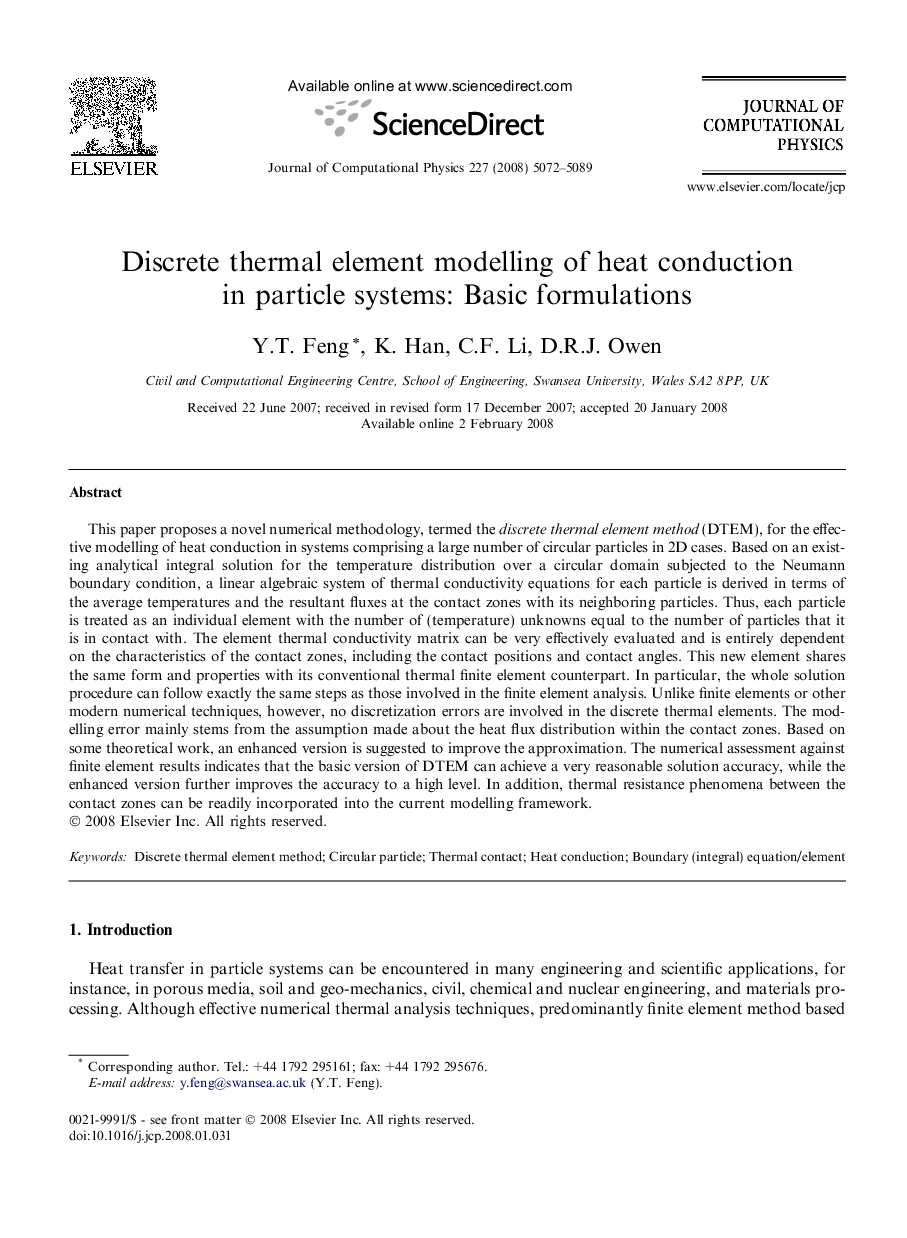| کد مقاله | کد نشریه | سال انتشار | مقاله انگلیسی | نسخه تمام متن |
|---|---|---|---|---|
| 522069 | 867809 | 2008 | 18 صفحه PDF | دانلود رایگان |

This paper proposes a novel numerical methodology, termed the discrete thermal element method (DTEM), for the effective modelling of heat conduction in systems comprising a large number of circular particles in 2D cases. Based on an existing analytical integral solution for the temperature distribution over a circular domain subjected to the Neumann boundary condition, a linear algebraic system of thermal conductivity equations for each particle is derived in terms of the average temperatures and the resultant fluxes at the contact zones with its neighboring particles. Thus, each particle is treated as an individual element with the number of (temperature) unknowns equal to the number of particles that it is in contact with. The element thermal conductivity matrix can be very effectively evaluated and is entirely dependent on the characteristics of the contact zones, including the contact positions and contact angles. This new element shares the same form and properties with its conventional thermal finite element counterpart. In particular, the whole solution procedure can follow exactly the same steps as those involved in the finite element analysis. Unlike finite elements or other modern numerical techniques, however, no discretization errors are involved in the discrete thermal elements. The modelling error mainly stems from the assumption made about the heat flux distribution within the contact zones. Based on some theoretical work, an enhanced version is suggested to improve the approximation. The numerical assessment against finite element results indicates that the basic version of DTEM can achieve a very reasonable solution accuracy, while the enhanced version further improves the accuracy to a high level. In addition, thermal resistance phenomena between the contact zones can be readily incorporated into the current modelling framework.
Journal: Journal of Computational Physics - Volume 227, Issue 10, 1 May 2008, Pages 5072–5089